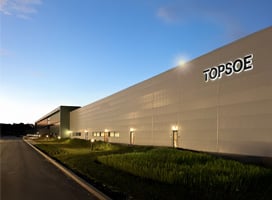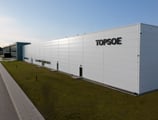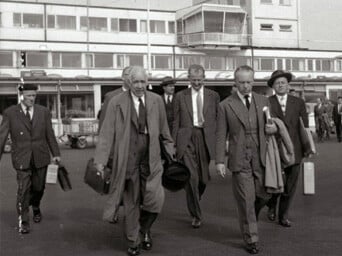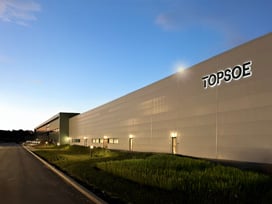Catalyst operation down to 370°C
VK59 is a cesium-promoted catalyst optimized for medium to high strength SO2 gasses with continuous operation down to 370°C (700°F). A top layer of VK59 in the first pass makes it possible to accommodate high strength SO2 feed gas without exceeding the maximum outlet temperature of 630°C (1165°F) and still maintain high bed conversion efficiency. The VK59 catalyst installed in the lower pass(es) of single absorption plants allows for significant conversion improvement.
-
accommodates strong SO2 feed gas without excessive first pass exit temperatures
-
greatly improved operating flexibility for rapidly changing feed gas composition
-
low ignition temperature for faster and cleaner start-ups
-
significantly extended idle time for autothermal restarts
-
improved overall conversion in single absorption plants Improved energy efficiency throughout the operating cycle due to low initial pressure drop.
Low ignition temperature
VK59 and VK69 catalysts have an exceptionally low ignition or “strike” temperatures of 320-330°C (610-625°F) that offer new possibilities for faster and cleaner start-ups. Autothermal restarts can be accomplished after a significantly longer idle time without the use of pre-heat.
12 mm Daisy
The 12 mm Daisy has become the most widely used catalyst shape on the market since introduced by Topsoe in 1984. The high void fraction results in improved energy efficiency throughout the operating cycle due to low initial pressure drop and increased capacity for dust. Topsoe’s 12 mm Daisy-shape has proven to be robust as well, with reported screening losses typically well below 10%. Topsoe’s VK38, VK48, and VK59 formulations are all available in the 12 mm Daisy-shape.
Benefits
-
low initial pressure drop
-
high dust capacity yielding in a lower rate of pressure drop increase
-
high activity
-
low screening losses
.png)








![SAF Airplane runway[1]-1 1](https://www.topsoe.com/hs-fs/hubfs/SAF%20Airplane%20runway%5B1%5D-1%201.png?width=800&height=640&name=SAF%20Airplane%20runway%5B1%5D-1%201.png)



